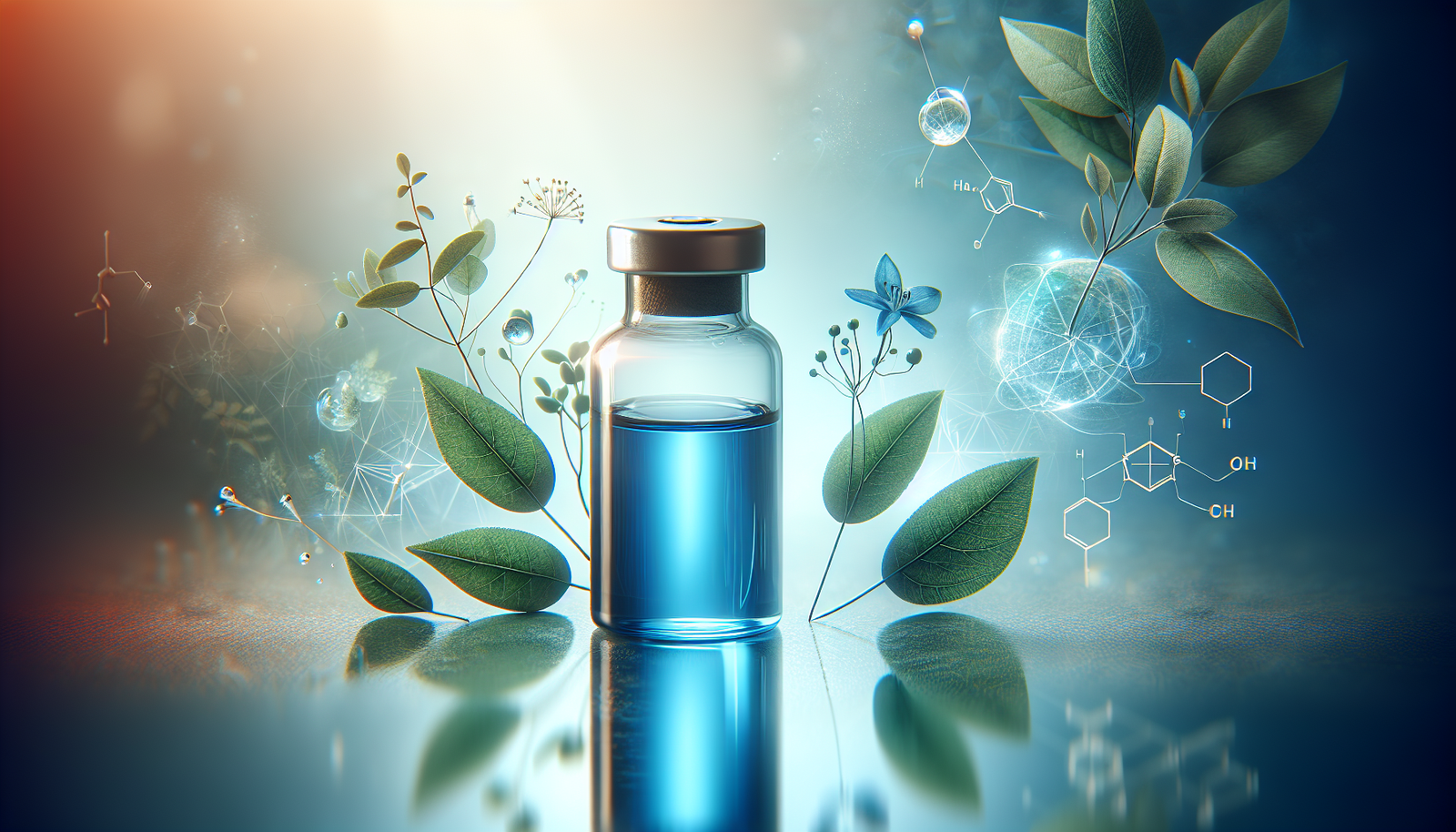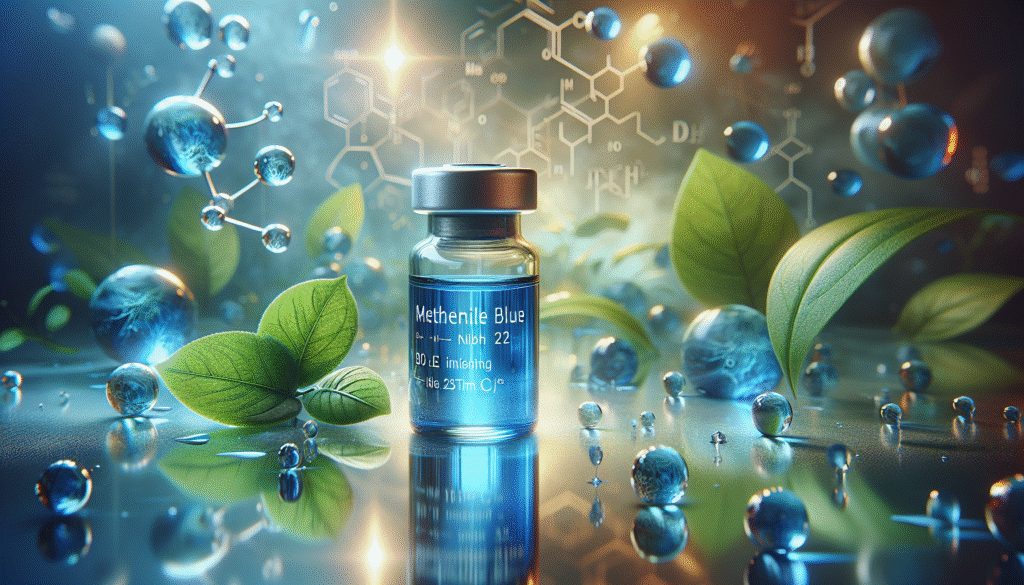
What if a simple compound could hold the key to longevity and youthful vitality? Methylene blue, initially known for its applications in medicine and biology, is now taking center stage in anti-aging research. With a growing body of evidence supporting its potential benefits, the focus on this compound is likely to intensify in the years ahead. Let’s unpack the nuances of methylene blue, its historical context, and its future implications in anti-aging therapies.

Understanding Methylene Blue
Methylene blue is a synthetic compound that has been used since the 19th century. Initially introduced as a dye, its medical applications expanded over the years, leading to its use in conditions such as methemoglobinemia, a blood disorder. However, its intriguing properties extend beyond medical intervention.
Chemical Structure and Properties
Methylene blue, chemically known as methylthioninium chloride, features a complex structure that enables it to interact with various biological molecules. Its unique properties include:
- Antioxidant Activity: Methylene blue acts as an electron donor, effectively combating oxidative stress, a contributor to aging.
- Neuroprotective Effects: Studies suggest it may protect neurons from degeneration, which could have implications for neurodegenerative diseases associated with aging.
- Mitochondrial Function: The compound may enhance mitochondrial function, making it a potential candidate for countering age-related metabolic decline.
These properties hint at how methylene blue could play an influential role in anti-aging research.
Historical Applications of Methylene Blue
Understanding the historical context of methylene blue can provide insights into its modern applications. This compound has transitioned through various stages in its usage, evolving from a simple dye to a significant player in health science.
Medical Uses
Historically, methylene blue’s introduction to medicine was groundbreaking. It was the first synthetic drug used to treat malaria and has been utilized as an antiseptic, an agent for surgical procedures, and more recently for cognitive enhancement.
Table 1: Overview of Methylene Blue Applications in Medicine
| Year | Application | Description |
|---|---|---|
| 1876 | Malaria treatment | First synthetic antimalarial drug. |
| 1890 | Dyes in histology | Used to stain tissues for microscopic examination. |
| 1930s | Antiseptic properties | Emerged as an antiseptic for various procedures. |
| 2000s | Cognitive enhancement | Investigated for neuroprotective effects. |
These medical applications lay the groundwork for methylene blue’s role in the burgeoning field of aging research.
Methylene Blue and Aging
Aging is a complex biological process characterized by a gradual decline in physiological function. As more researchers delve into the molecular mechanisms of aging, they identify compounds that may mitigate its effects, with methylene blue standing out as a compelling candidate.
Oxidative Stress and Aging
Oxidative stress occurs when there is an imbalance between free radicals and antioxidants in the body. This damage contributes to cellular aging and dysfunction. Methylene blue’s antioxidant properties present an opportunity to combat oxidative stress.
How Methylene Blue Addresses Oxidative Stress
- Electron Carrier: Methylene blue can accept and donate electrons, effectively aiding cellular respiration and energy production.
- Scavenging Free Radicals: By neutralizing free radicals, it may prevent cellular and DNA damage commonly associated with aging.
This dual action highlights the significance of methylene blue in prolonging cellular health and may ultimately promote longevity.
The Role of Mitochondria in Aging
Aging has profound implications on mitochondrial function, leading to decreased ATP production and increased oxidative stress. Mitochondria, known as the powerhouses of the cell, play a pivotal role in cellular metabolism and energy.
Methylene Blue’s Mitochondrial Support
Research indicates that methylene blue could enhance mitochondrial function in several ways:
- Improved ATP Efficiency: By facilitating electron transfer in the mitochondrial respiratory chain, it can increase ATP synthesis.
- Preventing Apoptosis: Methylene blue shows potential in preventing programmed cell death in damaged cells, favoring cellular longevity.
Table 2: Impact of Methylene Blue on Mitochondrial Function
| Function | Effect of Methylene Blue |
|---|---|
| ATP production | Increases efficiency of ATP synthesis. |
| Reactive oxygen species (ROS) | Reduces ROS levels, improving cell health. |
| Cellular stress response | Enhances resilience to stress, delaying senescence. |
By improving mitochondrial function, methylene blue could help address age-related declines in energy levels and vitality.

Neuroprotection in Aging
As individuals age, cognitive decline often becomes a pressing concern. Neurodegenerative diseases such as Alzheimer’s and Parkinson’s can impose a significant burden both physically and emotionally.
Methylene Blue’s Potential Neuroprotective Properties
Research points to methylene blue as a neuroprotector with promising applications in aging-related cognitive decline:
- Mitigating Neuroinflammation: Chronic inflammation in neural tissues is a hallmark of neurodegeneration. Methylene blue may suppress inflammatory pathways, safeguarding neural integrity.
- Promoting Neurogenesis: Emerging studies suggest that methylene blue can promote the growth of new neurons, enhancing cognitive function.
Table 3: Neuroprotective Mechanisms of Methylene Blue
| Mechanism | Potential Impact |
|---|---|
| Anti-inflammatory properties | May reduce the risk of neurodegenerative diseases. |
| Enhancement of cognitive function | Can potentially bolster memory and learning. |
| Protection against toxic agents | Safeguards neurons from damage due to toxins. |
By targeting neurodegenerative processes, methylene blue opens avenues for maintaining cognitive health as one ages.
Future Research Directions
As research evolves, the investigation into methylene blue’s role in anti-aging will likely continue to gain momentum. Emerging studies may clarify its application in various domains of health and wellness.
Clinical Trials and Human Studies
While preliminary studies provide a framework for understanding the biological impacts of methylene blue, well-designed clinical trials are necessary to substantiate these claims.
Important Considerations for Researchers
- Dosage and Administration: Finding the optimal dosage for efficacy without adverse effects will be crucial.
- Long-term Effects: Understanding the long-term implications of methylene blue supplementation is a significant avenue of exploration.
Potential Challenges
Despite the promising findings, researchers face several hurdles:
- Regulatory Barriers: Gaining approval for new uses of existing compounds can be a lengthy process.
- Public Perception: Misinformation and skepticism surrounding methylene blue may hinder widespread acceptance in therapeutic contexts.
Successfully navigating these challenges will be essential for integrating methylene blue into mainstream anti-aging solutions.
Conclusion
Methylene blue represents a fascinating intersection of history, science, and potential innovation in anti-aging research. With its multifaceted properties that address oxidative stress, mitochondrial health, and neuroprotection, this compound could well be at the forefront of advances in longevity and healthspan.
Its evolution from a simple dye to a potential anti-aging agent poses questions about the future of health education and lifestyle choices. The research continues to unfold, and as the implications of methylene blue become clearer, it may one day play an essential role in promoting healthier, longer lives.
As you consider the future of your aging process, bear in mind the role of innovative compounds like methylene blue. Staying informed and engaged with the evolving landscape of anti-aging research could empower you with tools and knowledge to enhance your health journey.
By remaining aware of emerging research, you position yourself not just to witness these developments but to actively engage in meaningful conversations about anti-aging methodologies, ultimately shaping your approach to longevity and wellness.